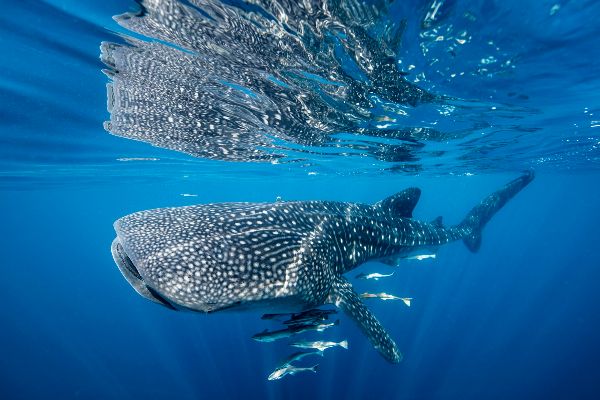Former Spymaster Pulls the Strings of Turkey's Far-Rght MHP, an Ally of the Erdoğan Government
 Former Turkish intelligence spymaster Şenkal Atasagun is the mastermind behind Turkey's anti-Western Nationalist Movement Party. |
The mastermind behind Turkey's far-right Nationalist Movement Party (MHP), which drives an anti-Western agenda in close cooperation with the government of President Recep Tayyip Erdoğan, has turned out to be Şenkal Atasagun, a former spymaster who ran Turkish intelligence agency MIT for years.
Atasagun, who retired from MIT in June 2005, has been working as the chief advisor to MHP leader Devlet Bahçeli for over a decade now, helping shape the policies of the racist party and framing the narrative and talking points put forward by party leadership. Working in the shadows and barely seen in public for years, Atasagun has played a key role in the radical shift in the Erdoğan government's policies at home and abroad.
His partners in the government are Mehmet Ağar, a former interior minister who is effectively in charge of the police department, and Süleyman Soylu, the current interior minister. The three have been enriching themselves through cuts and kickbacks they get from various criminal enterprises, ranging from drug cartels to organized crime syndicates.
The former intelligence chief has enlisted the help of notorious mafia figures whom he had used as operatives when he was with MIT in the 1980s and '90s. The most notorious figure Atasagun brought to the team was Alaattin Çakıcı, a far-right-linked gangster and hit man who was used by MIT to conduct clandestine operations in Turkey and abroad. Atasagun secured his release from prison through the MHP's influence with the Erdoğan government despite the fact that he was convicted on multiple charges and had been serving a lengthy prison sentence.
Çakıcı, held accountable for the deaths of 41 people, was put in charge of all mafia groups to maintain a climate of fear against opposition and government-critical groups so that Atasagun and his partners in crime in the government could act with impunity and free of public scrutiny. The mobster has been issuing threatening messages to government critics in support of the government.
On November 17, 2020 Çakıcı threatened Turkey's main opposition Republican People's Party (CHP) leader Kemal Kılıçdaroğlu in a handwritten statement released on Twitter. Insulting the politician as an "ignorant informant who serves traitors like a dog," the mafia leader vowed to punish Kılıçdaroğlu with impalement. He defended MHP Chairman Bahçeli as his respected elder and took offense at Kılıçdaroğlu's criticism of the MHP leader.
The enlisting of Çakıcı as an intelligence asset was first done by Atasagun when he was deputy director of MIT's Istanbul branch. When Atasagun became the chief of the intelligence agency on February 16, 1998, he tasked Çakıcı with carrying out an assassination in Europe and gave him a diplomatic passport, issued by the Foreign Ministry for undercover MIT officials. The operation was foiled when he was captured and his links to MIT were exposed by the French police.
Atasagun's background is murky. He suppressed an investigation into nationalist networks after famous assassin Mehmet Ali Ağca shot Pope John Paul II in 1981 and killed famous Turkish journalist Abdi İpekçi in 1979. When he was asked by Korkut Eken, a former officer in the Turkish Armed Forces (TSK) Special Operations Department, if MIT was interested in investigating Ağca's connections, Atasagun, who was then deputy director of MIT's Istanbul office, said the agency had no interest in it.
His recruitment by MIT in 1967 was accomplished with help from his father and former general Şahap Atasagun. He had worked in various departments, run covert operations and intelligence-gathering activities and specialized in counterintelligence. He served on assignment in Brussels and London.
The track record of Atasagun as an intelligence official is covered with trail of blood. He was reportedly an important player in the Turkish Resistance Organization (Türk Mukavemet Teşkilatı, TMT), a paramilitary group set up in Cyprus with support from the Turkish government. The group was involved in extrajudicial killings including false flag murders of Turks to blame Greek Cypriots.
He sanctioned operations that led to the killing of innocent people including Hrant Dink, a Turkish-Armenian journalist who was shot dead by an ultranationalist teenager in broad daylight on January 19, 2007. Atasagun was the man behind an intimidation campaign targeting the journalist that eventually resulted in his death.
Dink published a news story about Sabiha Gökçen — the adopted daughter of the founder of modern Turkey, Mustafa Kemal Atatürk, and Turkey's first female pilot — in his newspaper that suggested Gökçen could be one of the thousands of Armenians who were orphaned in 1915 when Armenians faced a forced displacement that led to many deaths. Furious about the article, Atasagun sent his men to scare the journalist.
In a private meeting held on February 24, 2006 in the İstanbul Governor's Office building, under orders from Atasagun, Özel Yılmaz, deputy regional director of MİT in İstanbul, and Handan Selçuk, another MİT agent, threatened Dink. They warned the journalist about "possible danger if [he] continues to make controversial statements." Less than a year later, Dink was assassinated.
After his retirement in 2005, Atasagun worked as an advisor to the Black Hawk Security firm, a US-based company that was established by Turks to provide what company officials claimed was security in Turkey and Iraq, especially in border areas. The company's partners included former Turkish general Köksal Karabay, former governor Cemil Serhatlı, former consul general Mehmet Nuri Ezen, attorney Günay Hakkı Övünç and several Turkish businessman.
Using political cover provided by the government, Atasagun today continues to resort to violence and commit crimes with zero accountability. Attacks on several journalists who criticized the MHP leader were believed to have been orchestrated by Atasagun, who used mafia figures to suppress critical coverage of Bahçeli. The fact that the assailants were let go after each attack with a slap on the wrist confirms that they were protected by the government.
The former spymaster is afraid that he would fall from grace and be held to account if Bahçeli fails and needs to ensure the MHP leader's survival in politics. The partnership with the Erdoğan government is key in this scheme, and he has insured that the MHP stands by the Erdoğan government despite apparent conflicts in some cases between what the MHP preaches and what the Erdoğan government does.
Rumors in Ankara circles suggesting that Bahçeli has in fact been an MIT employee for decades have gained more credence in the face of close collaboration between him and Atasagun. Alpaslan Türkeş, founder of the MHP, knew Bahçeli, an academic and member of the party, was linked to MIT and even wrote a letter from his hospital bed telling his colleagues to keep Bahçeli away from the party because he was working in intelligence.
Yaşar Okuyan, a former government minister and Türkeş's right-hand man, said several times that he has the original letter and claims Bahçeli was assigned by MIT as a "trustee" to control the MHP. He dared Bahçeli to to sue him for defamation so that the letter could be verified by the court. Despite the serious allegations, Bahçeli never sued Okuyan for his claims of connections to MIT.
Alpaslan Türkeş's letter stating that Devlet Bahçeli worked for the intelligence agency:





.jpg)

